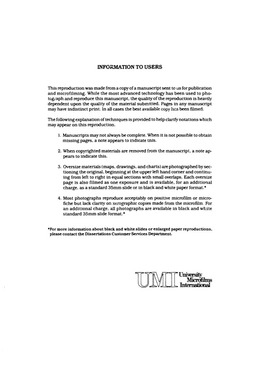| dc.contributor.author | Bushong, Donna Smith, | en_US |
| dc.date.accessioned | 2013-08-16T12:29:28Z | |
| dc.date.available | 2013-08-16T12:29:28Z | |
| dc.date.issued | 1985 | en_US |
| dc.identifier.uri | https://hdl.handle.net/11244/5399 | |
| dc.description.abstract | Data from vapor pressure osmometry, chloride ion-, and hydrogen ion-selective electrode measurements are reported for 2-phenylacetic acid in aqueous cetylpyridinium chloride. Results have been modelled using a mass-action approach to determine counterion binding fractions, apparent solubilization constants of phenylacetic acid into the micelle, and intramicellar activity coefficients for the system. | en_US |
| dc.description.abstract | A comparison of the results of phenylacetic acid solubilized in cetylpyridinium chloride with those for related compounds solubilized into the same surfactant indicates that specific interactions between phenylacetic acid and the head group of the surfactant are responsible for a small value of the limiting organic intramicellar activity coefficient. | en_US |
| dc.description.abstract | Vapor pressure osmometry is used to study the self-association of 2-phenylacetic acid in water. A mass-action description of the system predicts the data very well. This information is necessary to study the solubilization of phenylacetic acid by an aqueous surfactant system. | en_US |
| dc.description.abstract | There has been extensive research in the literature of aqueous surfactant systems. Often the data are fitted using a mass-action model. However, depending on the technique used, reported values of a particular parameter can vary widely. This is also due, in part, to the choice of values of other parameters in the model, since results from a single technique cannot adequately predict more than one or two of the mass-action parameters. Therefore, solutions of sodium octysulfate in water and cetylpyridinium chloride in water are studied using vapor pressure osmometry, ion-selective electrodes, and surface tension measurements. Using a mass-action model, the data from each technique are combined and fitted simultaneously. Least-squares values are calculated for all the parameters in the model. These parameters, then should be universal, in that they can predict the results from any technique used to study aqueous surfactant aggregation, specific for the surfactant and system temperature. Precise activities of the various species in solution (counterion, monomer and micelle) are calculated. Studies of this kind are crucial to studying the solubilization of organic molecules by surfactant systems, because it is this information which allows separation of the various components in solution for the techniques used to study micellar solubilization. | en_US |
| dc.format.extent | [x], 124 leaves : | en_US |
| dc.subject | Surface active agents. | en_US |
| dc.subject | Micelles. | en_US |
| dc.subject | Chemistry, Physical. | en_US |
| dc.title | Osmometry studies of surfactant aggregation and solubilization by micellar systems / | en_US |
| dc.type | Thesis | en_US |
| dc.thesis.degree | Ph.D. | en_US |
| dc.thesis.degreeDiscipline | Department of Chemistry and Biochemistry | en_US |
| dc.note | Source: Dissertation Abstracts International, Volume: 46-12, Section: B, page: 4254. | en_US |
| ou.identifier | (UMI)AAI8604582 | en_US |
| ou.group | College of Arts and Sciences::Department of Chemistry and Biochemistry | |
